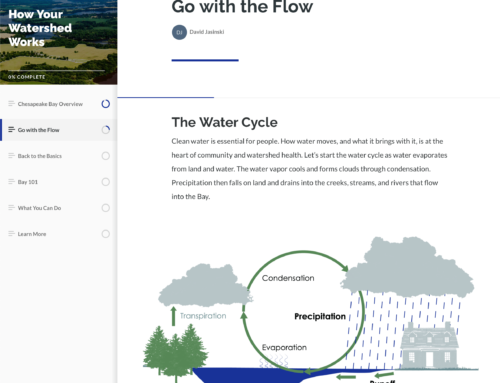Humans are hardwired for stories. Psychologist Jerome Bruner famously claimed that stories are 22 times more memorable than reciting facts1. Researchers at the University of Memphis found that students remembered 50% more details in a narrative text 2. Many studies have found narratives to be more persuasive than empirical evidence. Everyone is talking about communication through story nowadays, so how do you do it? How do you tell a good story, especially when there is complicated science that needs to be explained? Luckily, Randy Olson has been fine-tuning a great tool, the ABT framework, for a decade.

(Credit: Island Press)
ABT stands for three key words in the narrative framework: “And”, “But”, and “Therefore”. By formatting what you want to say with those words, you will automatically have a narrative structure composed of background, tension/conflict, and resolution. Rather than tell you about the ABT template, let’s look at how it works.
As you might have seen in our April newsletter or on our social media, we have just completed a set of seven educational modules with the goal of helping local government officials relate the restoration goals of the Chesapeake Bay to their more pressing community priorities called A Local Government Guide to the Chesapeake Bay. In our general outline of each module, you can see the ABT at work. They can all be summarized as the following sentence: “You are a local government official AND the Chesapeake Bay Program has big restoration goals for the Chesapeake Bay watershed that depend on local action, BUT you have your own local priorities like the economy, education, public health, and infrastructure that come first; THEREFORE, we’ve identified where the Bay’s priorities and your priorities overlap so that you can make decisions that benefit your community, and also the larger Bay region.”
 We even have ABTs within that overarching ABT framework. For example, let’s break down Module 6: Protecting Your Infrastructure Through Stormwater Resiliency. We start with background information on what stormwater is, follow it up with how stormwater runoff can impact a community, give information on stormwater resiliency and planning for the future, and finish with resources and tools to help local government officials manage their stormwater. The narrative flow, however, is: “Stormwater is the water not absorbed by the ground after a rainstorm because of impervious surfaces like roofs and parking lots AND this water can carry pollutants that harm human health and wildlife as well as impact your local economy and infrastructure (which will only get worse with projected increases in temperature and precipitation in the coming decades); BUT avoiding these negative impacts by building stormwater resiliency can bee complicated; THEREFORE, use the provided resources and suggested next steps to increase your resiliency and make your community safer, greener, and more prosperous.”
We even have ABTs within that overarching ABT framework. For example, let’s break down Module 6: Protecting Your Infrastructure Through Stormwater Resiliency. We start with background information on what stormwater is, follow it up with how stormwater runoff can impact a community, give information on stormwater resiliency and planning for the future, and finish with resources and tools to help local government officials manage their stormwater. The narrative flow, however, is: “Stormwater is the water not absorbed by the ground after a rainstorm because of impervious surfaces like roofs and parking lots AND this water can carry pollutants that harm human health and wildlife as well as impact your local economy and infrastructure (which will only get worse with projected increases in temperature and precipitation in the coming decades); BUT avoiding these negative impacts by building stormwater resiliency can bee complicated; THEREFORE, use the provided resources and suggested next steps to increase your resiliency and make your community safer, greener, and more prosperous.”
We used this narrative structure for the modules as an intuitive way of presenting dense information to busy local officials. Stories hold the attention better than a list of facts, and we wanted the officials to remember the information that we were presenting. Beyond the ABT structure, we included short, real-life stories through numerous case studies to facilitate connections between the information that we present and application within communities.
Are you fully realizing the power of storytelling in your work? We encourage you to use the ABT framework to tell your story, whether you are in an internal meeting or creating a video that will be seen by people across the globe. Need help developing your story? We’d love to chat. Contact us by email or through the Green Fin Studio website.
Lastly, if you don’t have it yet, we encourage you to pick up at least one of Olson’s books, including Houston We Have a Narrative or Narrative is Everything: The ABT Framework and Narrative Evolution to learn more.
1. Bruner, J. (1986). Actual minds, possible worlds. Harvard university press.
2. Graesser AC, Singer M, Trabasso T. Constructing inferences during narrative text comprehension. Psychol Rev. 1994 Jul;101(3):371-95. doi: 10.1037/0033-295x.101.3.371. PMID: 7938337.


[…] ABT narrative template, the singular narrative, and the two audiences. Read May’s ABT feature here. This month, we’ll be covering the singular narrative and audience. In Dr. Rick Nelson’s […]